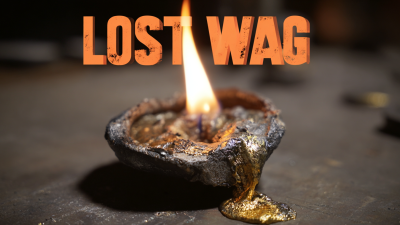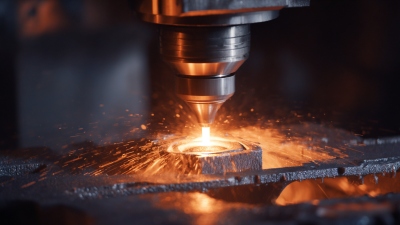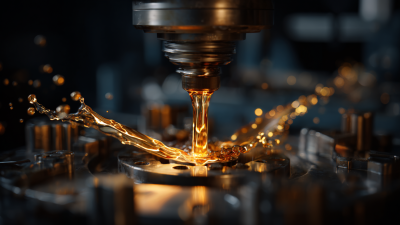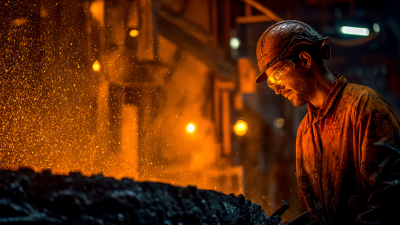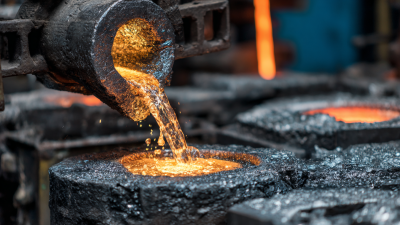 +86 180 0293 5268
+86 180 0293 5268






 Investment Casting has emerged as a pivotal manufacturing process, acclaimed for its precision and versatility across various industries. As global demand for intricate and high-quality components surges, the investment casting market is projected to reach USD 24.78 billion by 2027, growing at a CAGR of 6.2% from 2020 to 2027, according to a recent market research report. This growth is catalyzed by technological advancements, such as 3D printing and automation, which are revolutionizing traditional methods and enhancing production efficiency. Furthermore, the trend towards lightweight and complex designs in aerospace and automotive sectors is propelling innovation in investment casting. As these industries evolve, understanding the latest trends and innovations in investment casting becomes essential for manufacturers aiming to stay competitive in this changing landscape.
Investment Casting has emerged as a pivotal manufacturing process, acclaimed for its precision and versatility across various industries. As global demand for intricate and high-quality components surges, the investment casting market is projected to reach USD 24.78 billion by 2027, growing at a CAGR of 6.2% from 2020 to 2027, according to a recent market research report. This growth is catalyzed by technological advancements, such as 3D printing and automation, which are revolutionizing traditional methods and enhancing production efficiency. Furthermore, the trend towards lightweight and complex designs in aerospace and automotive sectors is propelling innovation in investment casting. As these industries evolve, understanding the latest trends and innovations in investment casting becomes essential for manufacturers aiming to stay competitive in this changing landscape.
The investment casting industry is experiencing significant growth, with the U.S. metal forging market valued at $7.75 billion in 2022 and projected to grow at a compound annual growth rate (CAGR) of 6.1%. This growth mirrors the trends in related sectors, such as the automotive industry, where the market for leather and synthetic leather is also on the rise, expected to reach $2.51 billion by 2030 at a CAGR of 6.3%. These statistics highlight the increasing demand for high-quality materials and components across various applications, underscoring the importance of innovation in investment casting processes.
Challenges also loom within the investment casting landscape, including rising competition and the need to adapt to evolving customer preferences. As firms strive for efficiency, the integration of advanced technologies, such as automation and 3D printing, is becoming imperative. This not only enhances production capabilities but also addresses sustainability concerns, as manufacturers seek to minimize waste and improve energy efficiency. The industry must navigate these challenges by embracing innovation and leveraging market insights to maintain a competitive edge in a rapidly changing environment.
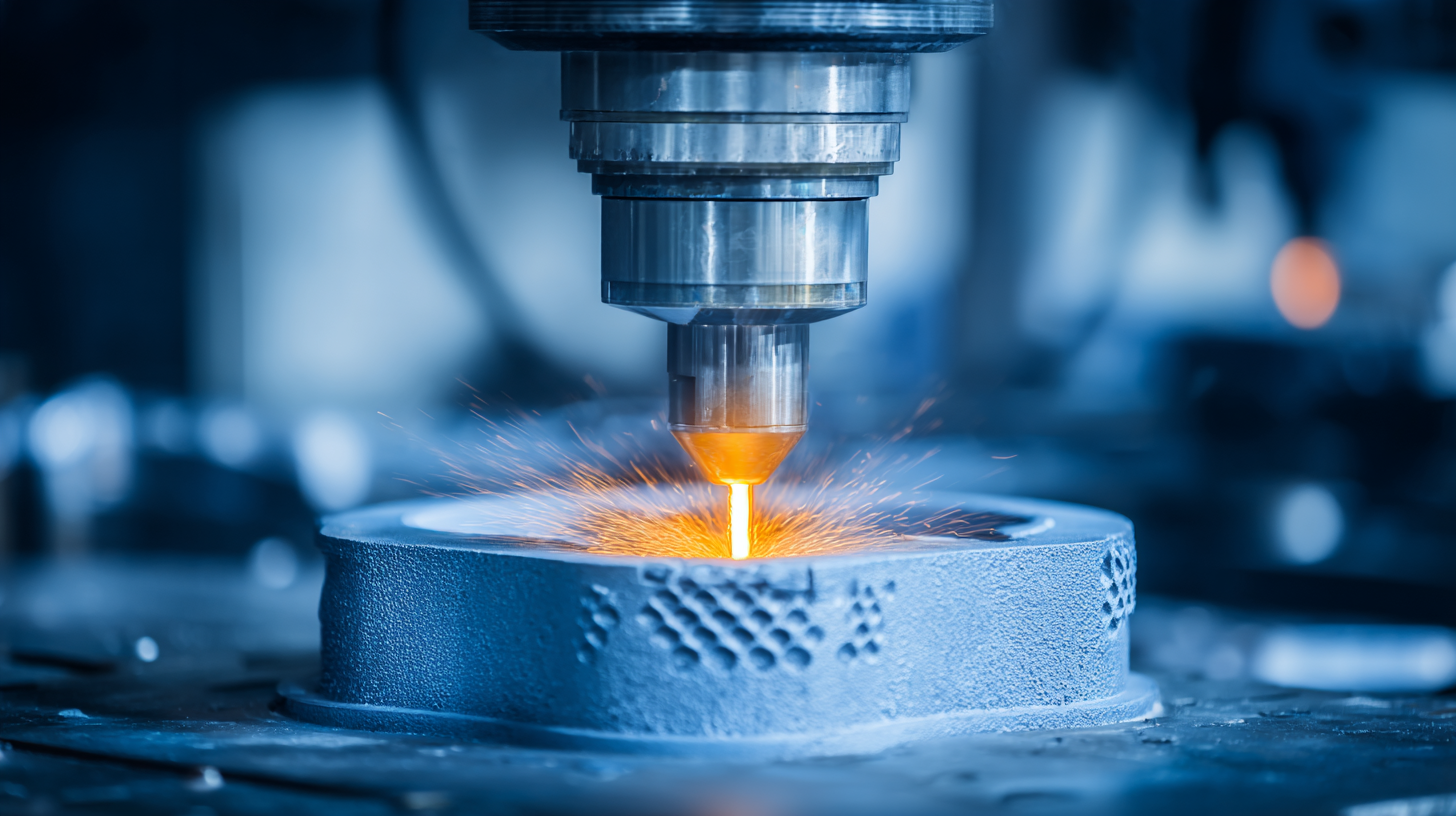
The landscape of investment casting is undergoing a significant transformation driven by emerging technologies that are reshaping its processes. Among these advancements, additive manufacturing (AM) stands out, particularly in the realm of metal applications. As industries increasingly adopt innovative 3D printing technologies, they are discovering the potential of laser powder bed fusion and other techniques, which optimize the production of complex geometries and improve material properties. This shift not only enhances efficiency but also minimizes waste, paving the way for a more sustainable approach in investment casting.
Additionally, the integration of AI and machine learning into foundry operations is driving further innovations in the investment casting sector. Companies are leveraging intelligent systems to optimize production schedules, predict equipment failures, and enhance quality control. These advancements allow for a level of customization and precision that was previously unattainable. As investment casting continues to evolve, the synergy of these cutting-edge technologies promises to enhance product quality, reduce lead times, and expand applications across various industries, ultimately redefining the future of manufacturing.
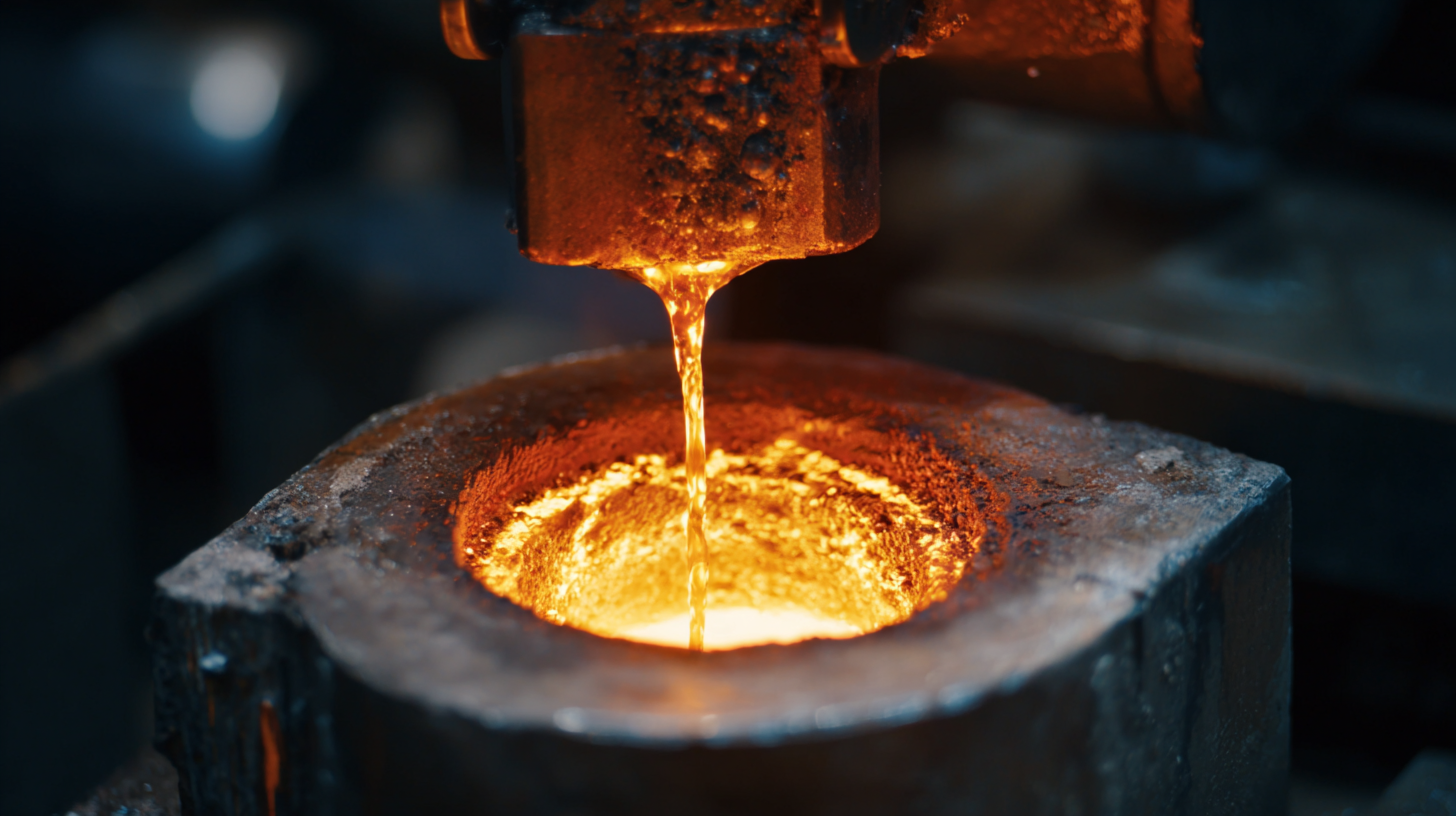
Sustainability practices in investment casting have become increasingly crucial as industries strive to minimize their environmental impact. According to a recent report by MarketsandMarkets, the global investment casting market is expected to reach $32.3 billion by 2026, driven significantly by the rising demand for sustainable manufacturing processes. As a result, investment casting companies are now prioritizing the adoption of eco-friendly materials and energy-efficient technologies to meet these demands.
One notable trend in this evolution is the shift towards using recyclable materials. A study from the Casting Industry Suppliers Association indicates that nearly 70% of firms in the investment casting sector are investing in ways to incorporate recycled metals into their production processes. Additionally, advancements in melting technologies have allowed for significant reductions in energy consumption, with some firms reporting energy savings of up to 40% compared to conventional practices. This progressive approach not only supports sustainability goals but also offers a competitive edge in a market that increasingly favors eco-conscious manufacturing.
| Trend/Innovation | Description | Impact on Sustainability | Future Outlook |
|---|---|---|---|
| Recycling of Materials | Incorporating recycled metals and alloys into investment casting processes. | Reduces waste and resource consumption, leading to lower carbon footprint. | Expected to grow as regulatory pressures increase for sustainable practices. |
| Digital Manufacturing | Utilization of additive manufacturing technologies for mold making. | Minimizes material waste and allows for more complex designs. | Increasing integration with traditional processes is anticipated. |
| Energy Efficiency | Adoption of energy-efficient furnaces and induction melting technologies. | Significantly lowers energy consumption during casting operations. | Expected widespread adoption as businesses seek to cut costs and emissions. |
| Supply Chain Transparency | Increasing demand for sustainable sourcing and traceability in supply chain. | Encourages ethical practices and reduces environmental impact. | Will likely become a competitive advantage as consumers prioritize sustainability. |
| Water Usage Reduction | Innovative cooling and cleaning methods to minimize water usage. | Increases water conservation efforts in manufacturing processes. | Potential for growth as water scarcity issues become more pressing globally. |
The investment casting industry is undergoing a significant transformation driven by the principles of Industry 4.0. With the integration of digital manufacturing technologies, companies are experiencing enhanced productivity and efficiency levels like never before. Automation and real-time monitoring are becoming pivotal, allowing for streamlined processes that reduce waste and improve precision in casting. This shift not only optimizes operational workflows but also paves the way for smart manufacturing practices that enhance overall competitiveness in the market.
Tips: To effectively implement Industry 4.0 solutions, businesses should begin with a thorough assessment of their existing processes and identify areas that could gain from automation. Additionally, investing in training for staff to leverage new technologies can foster a culture of innovation and adaptability.
As the Asia Pacific metal casting market is projected to grow significantly in the coming years, companies that embrace these advancements will be better positioned for success. Staying ahead of trends like smart manufacturing will not only improve efficiency but also enhance product quality, solidifying a company’s reputation in a competitive landscape.
Tips: Regularly keeping an eye on technological advancements and market trends can give businesses a strategic advantage. Engaging in industry forums and workshops can also provide valuable insights into best practices and innovative solutions.
The future of investment casting is poised for transformation, driven by innovative materials that enhance performance and expand applications. Advanced metals, such as titanium alloys and high-performance polymers, are gaining traction due to their superior properties, including lightweight and corrosion resistance. These materials enable manufacturers to create more complex geometries with greater durability, thereby meeting the increasing demands of industries like aerospace and automotive.
When considering new materials for investment casting, it's vital to test their compatibility with existing processes. **Tip:** Always conduct preliminary studies to assess the mechanical properties and casting behavior of new alloys or polymers to prevent unexpected challenges during production. Additionally, collaboration with material scientists can lead to breakthroughs in developing hybrid materials that offer the best of both worlds, combining strength with lower weight.
Moreover, sustainable practices are becoming a focus within the industry. With the rise of eco-friendly ceramics and recycled metals, companies can reduce waste while producing high-quality castings. **Tip:** Look into local suppliers of recycled materials to not only cut down costs but also enhance your company's green credentials. Embracing these trends will not only future-proof investment casting operations but also foster innovation in product development.
This chart illustrates the various trends and innovations shaping the investment casting industry. Each element represents its impact level on a scale of 1 to 10, showcasing the significance of developments such as 3D printing integration, material innovations, sustainability practices, and the influence of automation and AI.
